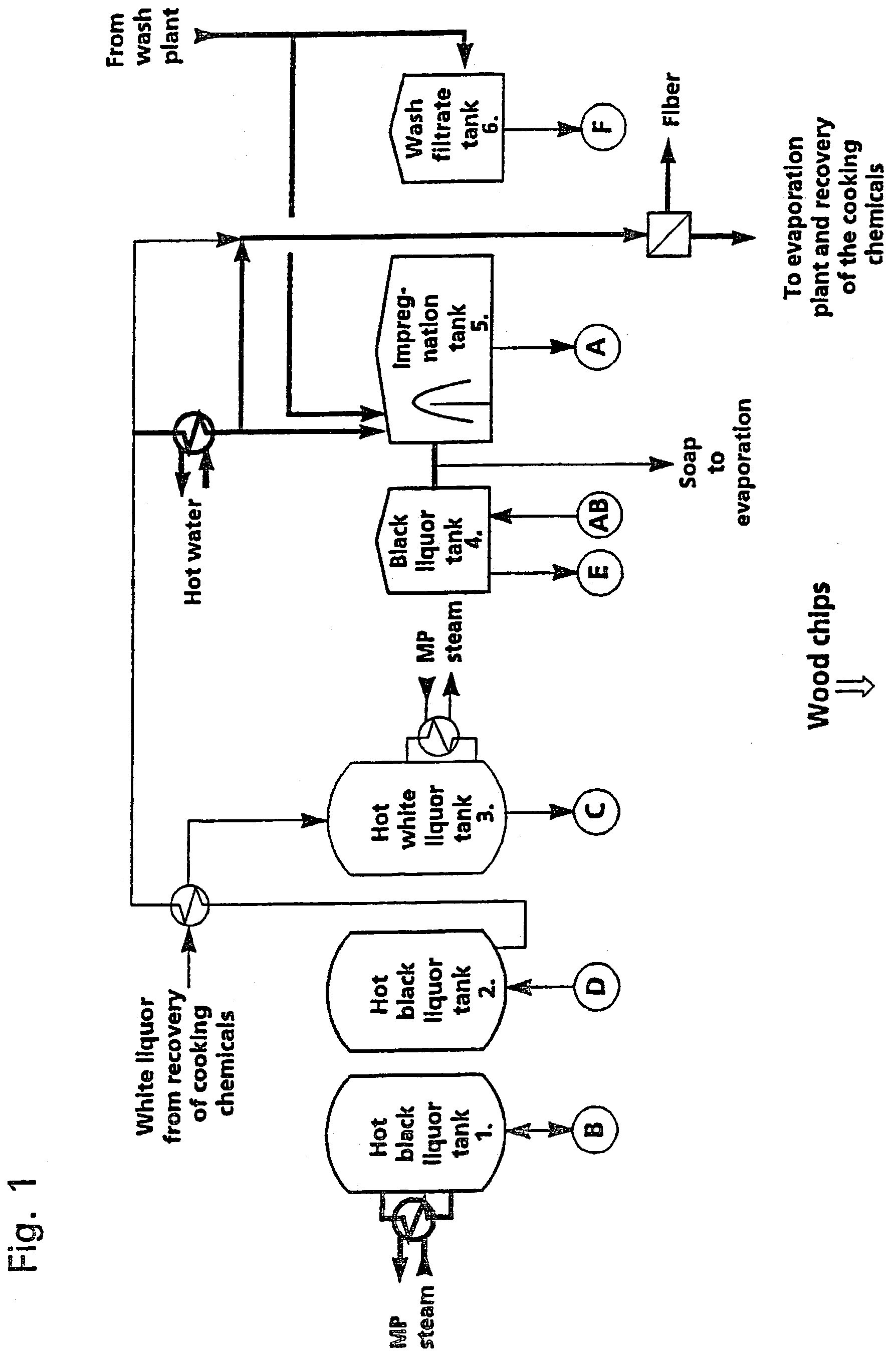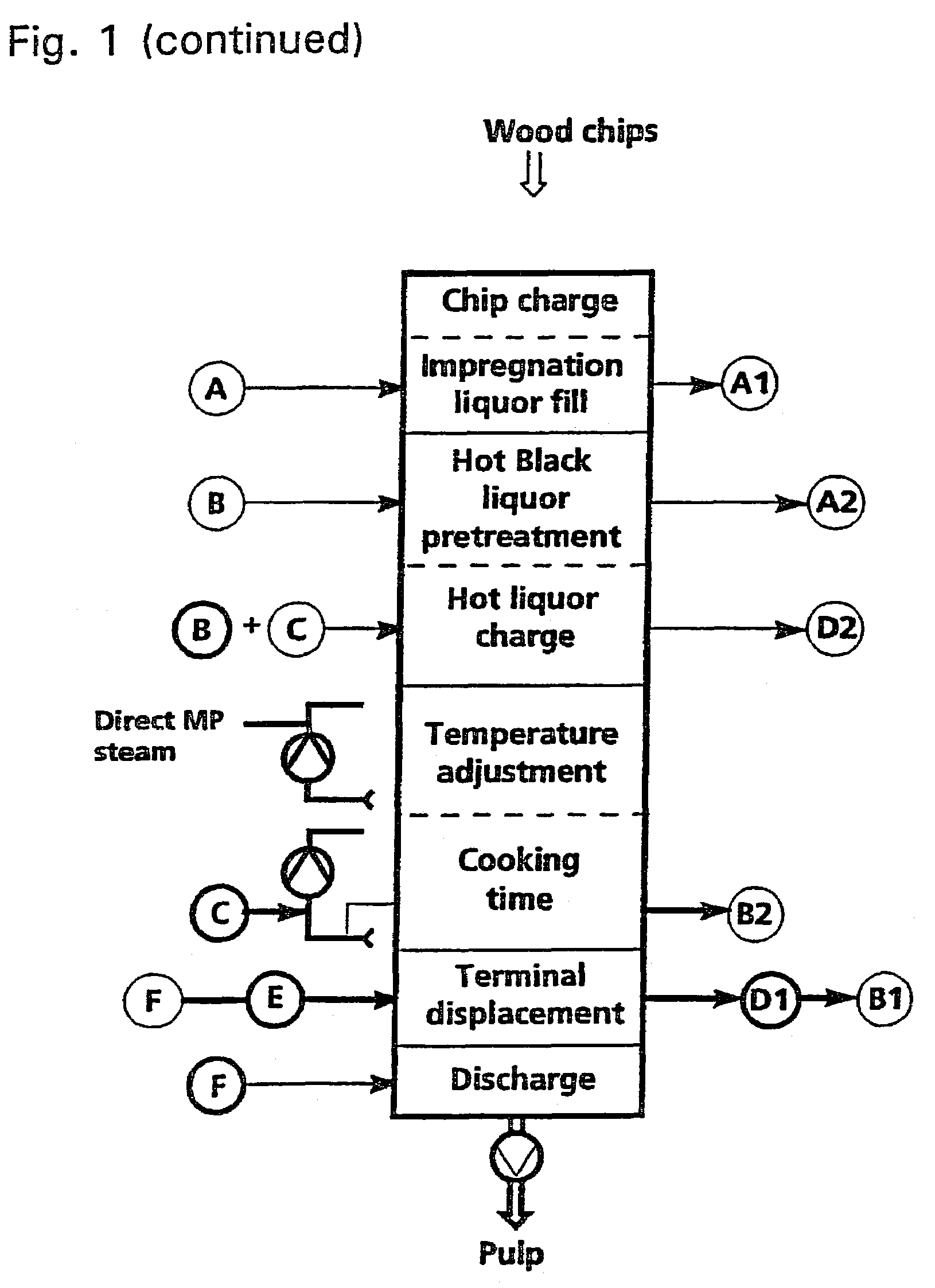Method for improved turpentine recovery from modern cooking plants
a technology of turpentine and cooking plants, which is applied in vacuum distillation separation, separation processes, lighting and heating apparatus, etc., can solve the problems of lowering the quality of turpentine and the difficulty of pulp washing, and achieve the effects of lowering reducing the difficulty of pulp washing, and reducing the solubility of extractives
- Summary
- Abstract
- Description
- Claims
- Application Information
AI Technical Summary
Benefits of technology
Problems solved by technology
Method used
Image
Examples
example
[0061]In an industrial liquor displacement batch cooking plant, softwood chips were cooked. The liquors from tank 1 and tank 2 shown in FIG. 1 were expanded using a laboratory expansion tank connected to the process. The turpentine balance over the expansion tank was calculated. Table 1 shows the results.
[0062]Table 1. Results of flashing liquors in tank 1 and 2 at various depressurizing degrees expressed as temperature difference. ΔT of 0° C. represent prior art with applied overpressure in the expansion tank.
[0063]
HBL tank 1ΔT(° C.) 0151525Δh(kJ / kg) 042163105Turpentine(mg / l)46-8522111914HBL tank 2ΔT(° C.) 01Δh(kJ / kg) 04Turpentine(mg / l)6615
[0064]For the tank 1 results, the turpentine concentration was considerably reduced, when the liquor was depressurized by 0.2 bar and the temperature decreased by 1° C. A temperature difference of 5° C. decreased the turpentine content even more. For the liquor in tank 2, an expansion using a temperature difference of 1° C. also showed significan...
PUM
| Property | Measurement | Unit |
|---|---|---|
| temperature | aaaaa | aaaaa |
| boiling point | aaaaa | aaaaa |
| temperature | aaaaa | aaaaa |
Abstract
Description
Claims
Application Information
 Login to View More
Login to View More - R&D
- Intellectual Property
- Life Sciences
- Materials
- Tech Scout
- Unparalleled Data Quality
- Higher Quality Content
- 60% Fewer Hallucinations
Browse by: Latest US Patents, China's latest patents, Technical Efficacy Thesaurus, Application Domain, Technology Topic, Popular Technical Reports.
© 2025 PatSnap. All rights reserved.Legal|Privacy policy|Modern Slavery Act Transparency Statement|Sitemap|About US| Contact US: help@patsnap.com



